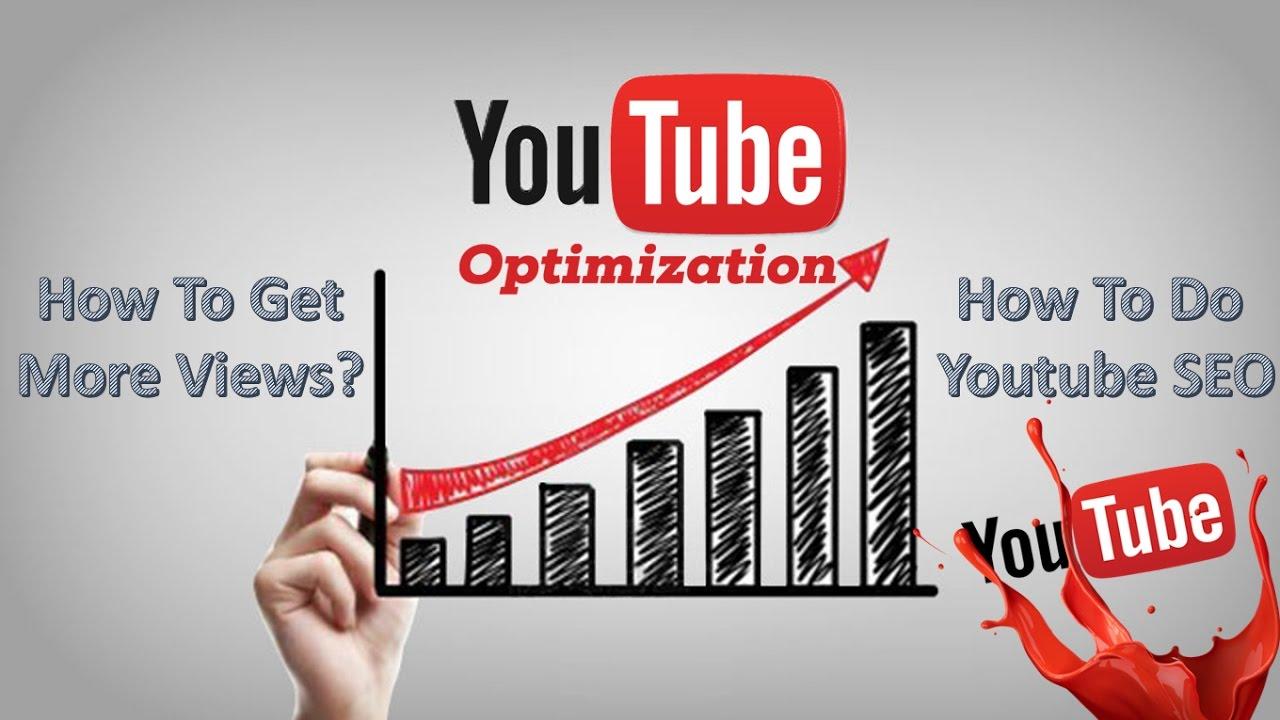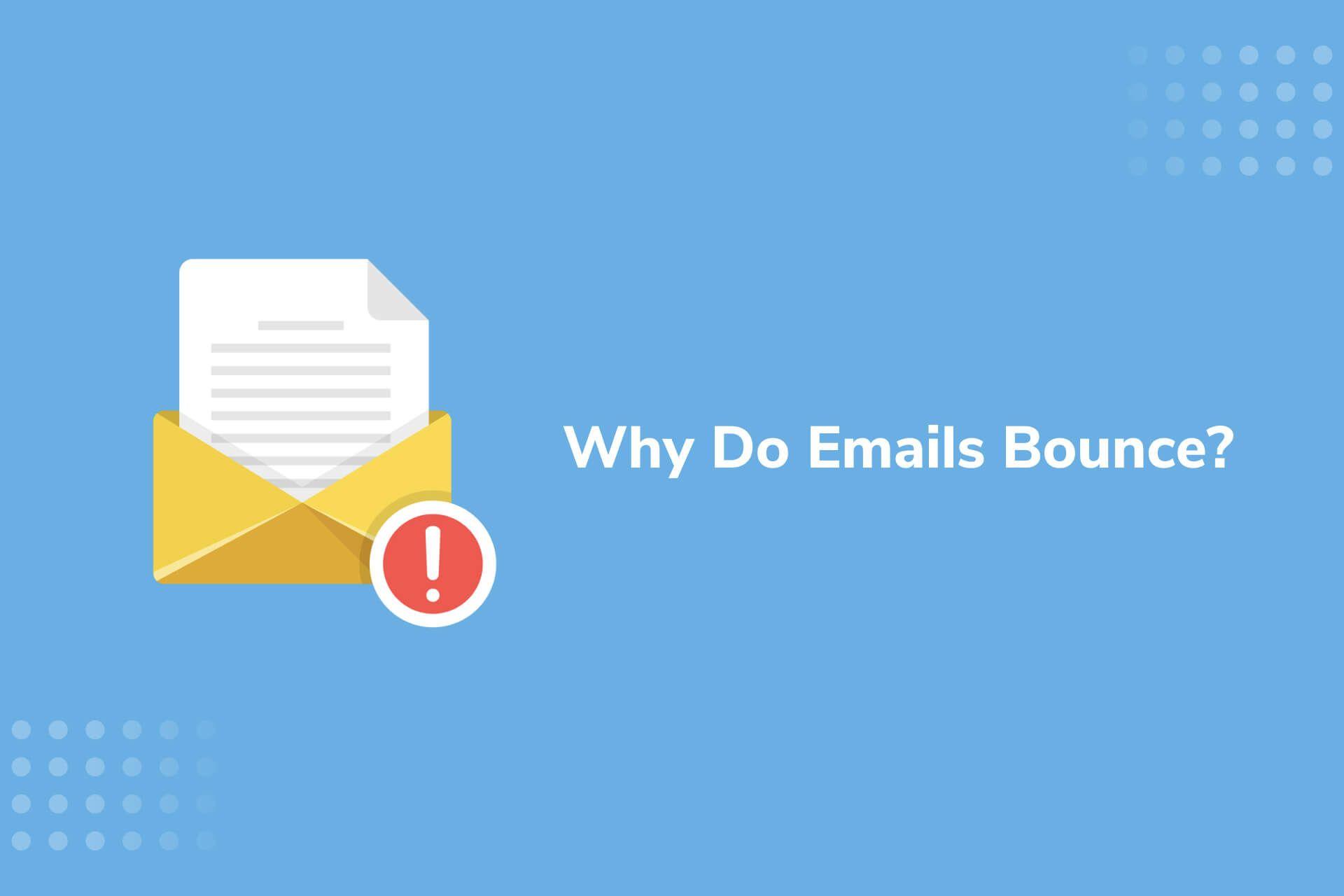
Have you ever sent an email only to find out it never reached its destination? It can be frustrating, right? You craft the perfect message, hit send, and then—bam!—you get a notification that your email has bounced back. So, what exactly does that mean? A bounced email occurs when your message is returned to you instead of being delivered to the recipient’s inbox. It’s more common than you might think, and it can happen for a variety of reasons.
In this article, we’ll explore the ins and outs of bounced emails, uncovering five key reasons why they happen and, more importantly, how you can prevent them in the future. Whether you’re a busy professional, a small business owner, or just someone who relies on email to communicate, understanding this phenomenon will save you time, enhance your credibility, and improve your communication efficiency. Let’s dive in and make sure your emails land exactly where they’re supposed to—right in the inbox!
Understanding Bounced Emails and Their Impact on Your Communication
Bounced emails can significantly hinder your communication efforts, whether it’s for business or personal purposes. When an email bounces back, it means it was not delivered to the recipient’s inbox. Understanding the reasons behind these bounce-backs is crucial for maintaining effective communication.
There are primarily two types of bounced emails: hard bounces and soft bounces. A hard bounce indicates a permanent issue, such as an invalid email address or a domain that no longer exists. On the other hand, a soft bounce usually signifies a temporary problem, like a full inbox or a server issue. Recognizing the difference between these types can guide your next steps for improving email deliverability.
Here are some common reasons why emails may bounce:
- Invalid Email Address: Typos in the email address or outdated contacts can lead to this issue.
- Full Mailbox: If a recipient’s inbox is at capacity, your email will not be accepted.
- Domain Issues: If the recipient’s domain is down or misconfigured, your email may bounce.
- Spam Filters: Emails that trigger spam filters often bounce back or land in the spam folder.
- Server Problems: Temporary issues with either sender or recipient servers can cause soft bounces.
To minimize the chances of emails bouncing, consider implementing the following strategies:
- Regularly Clean Your Email List: Periodically remove invalid or inactive email addresses.
- Double-Check Email Addresses: Always verify email addresses for accuracy before sending.
- Opt for Double Opt-In: Encourage users to confirm their email addresses during sign-up.
- Monitor Bounce Rates: Keep track of bounced emails to identify trends and take action.
- Maintain Good Sender Reputation: Avoid spammy practices that can negatively affect your deliverability.
Being proactive about understanding and addressing bounced emails can enhance your communication efforts. A well-maintained email list, combined with awareness of the types of bounces, will empower you to connect effectively with your audience. By focusing on these aspects, you can not only ensure your messages are delivered but also bolster your relationship with recipients.

The Different Types of Bounced Emails Explained
Bounced emails can be a source of frustration for anyone looking to communicate effectively via email. Understanding the different types of bounced emails is crucial for fine-tuning your email campaigns and ensuring that your messages reach their intended recipients. Let’s break down the two main categories: soft bounces and hard bounces.
Soft Bounces occur when an email is temporarily unable to reach the recipient’s inbox. This can happen for several reasons:
- The recipient’s inbox is full.
- The server is down or experiencing issues.
- The email is too large for the recipient’s server.
Soft bounces are typically not as damaging as hard bounces because they indicate a temporary issue. If you notice a soft bounce, it’s a good practice to monitor it for a while before deciding to remove the email address from your list.
Hard Bounces, on the other hand, indicate a permanent failure to deliver the email. This usually happens when:
- The email address does not exist.
- The domain name is invalid or no longer active.
- The recipient’s mail server blocks your emails.
Hard bounces require immediate attention. Continuing to send emails to hard-bounced addresses can hurt your sender reputation and affect your overall email deliverability. Therefore, it’s essential to promptly remove these addresses from your mailing list.
To better understand these types of bounces, here’s a quick comparison:
| Type of Bounce | Duration | Action Required |
|---|---|---|
| Soft Bounce | Temporary | Monitor and retry later |
| Hard Bounce | Permanently failed | Remove from list |
Additionally, email clients often categorize bounces further based on the reason for failure. These categories can include:
- Mailbox Unavailable: Usually linked to the mailbox being full.
- Message Size Exceeded: When the email is too large for the recipient’s server.
- DNS Issues: Problems with the domain name system that prevent delivery.
recognizing the differences between soft and hard bounces—and their various subtypes—can significantly enhance your email marketing strategy. By being proactive in addressing these issues, you can improve your email deliverability and maintain a healthy email list.
Common Reasons Why Your Emails Bounce
Email bounces can be a frustrating experience for anyone trying to communicate effectively. Understanding the can help you troubleshoot and improve your email delivery success. Here are some of the primary culprits that could be causing your emails to hit a wall:
- Invalid Email Addresses: One of the most frequent reasons for a bounced email is the presence of incorrect or outdated email addresses. Always double-check that your recipients’ email addresses are entered correctly, as a single typo can prevent your message from reaching its destination.
- Full Mailbox: If the recipient’s inbox is full, your email will bounce back. This situation often happens with personal email accounts that have storage limits. Encourage your contacts to regularly manage their inboxes to avoid this scenario.
- Domain Issues: Sometimes, the domain itself may be experiencing technical issues or could be inactive. If the recipient’s email domain is down, your message won’t make it through. Using a reliable email service provider can help mitigate this issue.
- Spam Filters: If your email is flagged as spam, it might not even make it to the recipient’s inbox, leading to a bounce. Ensure you’re following best practices in email marketing by maintaining a clean list, avoiding spammy language, and providing valuable content.
- Server Configuration Problems: Occasionally, server issues on your end can lead to bounce backs. Misconfigured DNS settings or email servers can prevent successful delivery. Regularly auditing your email setup can help catch and resolve any potential problems.
To keep your emails flowing smoothly, consider implementing some best practices:
| Best Practices | Description |
|---|---|
| Regularly Update Email Lists | Remove inactive or invalid addresses to enhance deliverability. |
| Monitor Bounce Rates | Keep track of bounce rates to identify patterns and troubleshoot issues. |
| Verify Email Addresses | Use verification tools to ensure the accuracy of emails before sending. |
| Optimize Content | Avoid spammy phrases and ensure that your content adds value to the recipient. |
By addressing these common reasons for email bounces, you can enhance your email communication strategy and ensure that your messages hit the intended target. Remember, a well-maintained email list and adherence to best practices can significantly improve your chances of successful email delivery.
How Invalid Email Addresses Lead to Bounces
Email marketing remains a powerful tool for businesses, but one of the most frustrating challenges marketers face is dealing with bounced emails. One major culprit behind these bounces is the presence of invalid email addresses. Understanding how these incorrect addresses contribute to your bounce rate can help you significantly improve your email marketing efforts.
Invalid email addresses can arise from a variety of sources, and it’s essential to recognize them to mitigate the impact on your campaigns. Here are some common reasons why email addresses may be invalid:
- Typos: Simple mistakes during data entry can lead to incorrect email formats.
- Outdated information: Users may change their email addresses without notifying you.
- Temporary addresses: Some users create temporary accounts for one-time use, leading to bounces later.
- Domain issues: An email domain may no longer exist or could be incorrectly formatted.
When you send emails to these invalid addresses, your email service provider (ESP) registers them as bounces. This bounce data is critical because it can influence your sender reputation. A high bounce rate signals to ISPs that your email list may be poorly managed, potentially resulting in your legitimate emails being marked as spam.
To avoid the pitfalls of invalid email addresses, consider implementing a few effective strategies:
- Double opt-in: This method ensures that subscribers confirm their email addresses before they’re added to your list.
- Regular list cleaning: Periodically review and remove addresses that have bounced or shown no engagement over time.
- Utilize validation tools: Employ email validation services during the sign-up process to catch invalid addresses early.
Incorporating these practices can substantially reduce your bounce rate, enhance your email deliverability, and ultimately improve your engagement metrics. By maintaining a clean and validated email list, you not only protect your sender reputation but also ensure that your messages reach the right audience, leading to better conversions.
To illustrate the impact of invalid email addresses, consider the following table that summarizes bounce rates based on different types of invalid emails:
| Type of Invalid Email | Bounce Rate (%) |
|---|---|
| Typos | 15% |
| Outdated Information | 25% |
| Temporary Addresses | 30% |
| Domain Issues | 20% |
As you can see, different categories of invalid emails contribute varying bounce rates, emphasizing the importance of maintaining accurate data. By understanding these factors and proactively addressing invalid email addresses, you can keep your email marketing campaigns on track and your audience engaged.

The Role of Full Mailboxes in Email Delivery Failures
When it comes to email delivery, one of the most frustrating issues can arise from full mailboxes. A full mailbox signifies that the recipient has exceeded their storage limit, which can lead to bounced emails. This not only disrupts communication but can also affect your sender reputation. Understanding how full mailboxes contribute to email delivery failures is crucial for anyone involved in email marketing or communication.
Here are some key points to consider regarding full mailboxes:
- Capacity Limits: Most email providers impose storage limits on their users. Once a mailbox reaches its limit, incoming emails will bounce back to the sender, resulting in failed delivery.
- Temporary vs. Permanent Failures: A full mailbox can lead to temporary delivery failures. However, if the mailbox remains full for an extended period, the issue may escalate to a permanent failure, making it vital to address the situation quickly.
- Impact on Sender Reputation: Frequent bounces due to full mailboxes can harm your sender reputation. Internet Service Providers (ISPs) monitor bounce rates, and a high rate can lead to your emails being flagged as spam.
- Data Cleanup: Encourage your recipients to regularly clean up their inboxes. This can involve deleting old emails, archiving important messages, or increasing their storage limit with their email service provider.
To help visualize the differences between temporary and permanent bounce scenarios, consider the following table:
| Type of Bounce | Cause | Action Required |
|---|---|---|
| Temporary | Mailbox full | Wait and resend later |
| Permanently | Mailbox remains full for too long | Remove from mailing list |
Additionally, consider implementing a strategy to manage your mailing lists effectively. Regularly monitor engagement levels and remove inactive subscribers who may not be checking their emails. This practice can significantly reduce the chances of encountering full mailboxes.
Lastly, always provide clear and easy options for recipients to update their preferences or change their email addresses. A simple update can prevent future delivery issues caused by full mailboxes, keeping your communication lines open and effective.

Identifying Server Issues That Cause Bounced Emails
Bounced emails can be frustrating, especially when they disrupt communication with clients or subscribers. Understanding the server-related issues that lead to these bounces is crucial in maintaining a healthy email deliverability rate. Here are some common server issues that can cause emails to bounce:
- Server Configuration Errors: Improperly configured email servers can lead to delivery failures. This includes issues with DNS settings, SPF records, and DKIM authentication. Ensuring these are set up correctly is essential for verifying that your emails are legitimate and not flagged as spam.
- IP Reputation: If your server’s IP address is blacklisted due to previous spam complaints or poor sending practices, emails sent from that server are likely to bounce. Regularly check your server’s IP reputation and take action to improve it if necessary.
- Mail Server Overload: When a server is overwhelmed by a high volume of outgoing emails, it may not be able to process them efficiently. This can lead to temporary bounces. Monitoring server load and optimizing the sending process can mitigate this issue.
- Software Bugs: Occasionally, bugs in the email server software or associated applications can cause emails to bounce unexpectedly. Keeping your software updated and regularly checking for patches can help prevent these issues.
To further illustrate these points, consider this table showing different server issues and their potential solutions:
| Server Issue | Potential Solution |
|---|---|
| Configuration Errors | Verify DNS, SPF, DKIM settings |
| IP Reputation | Check blacklists and improve sending practices |
| Server Overload | Monitor server performance and optimize sending limits |
| Software Bugs | Update software and apply necessary patches |
Additionally, consider the importance of using a reliable email service provider. Many providers offer built-in tools to monitor server health and deliverability metrics, helping you catch issues before they lead to bounced emails. Investing in a quality service can save you headaches down the road.
implementing a feedback loop with your recipients can provide insight into why emails are bouncing. This allows you to adjust your strategies while maintaining a positive relationship with your audience.
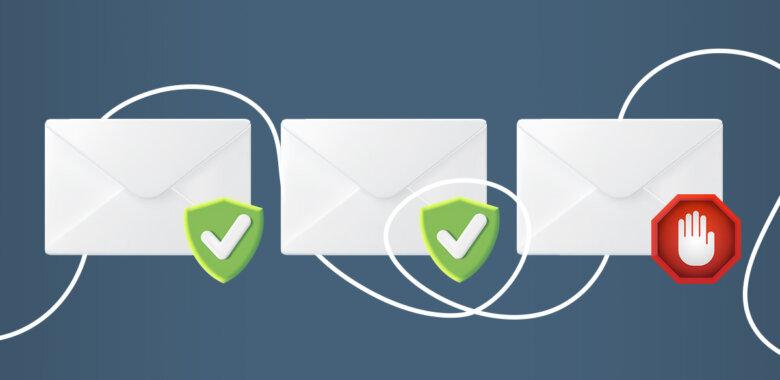
The Importance of Email Authentication in Preventing Bounces
Email authentication plays a crucial role in maintaining the health of your email marketing campaigns. When you authenticate your email, you essentially verify your identity as a sender. This process adds a layer of trust between your emails and the recipients’ inboxes, significantly minimizing the likelihood of bounces.
One of the key benefits of email authentication is its ability to enhance your sender reputation. Internet Service Providers (ISPs) and email clients are more likely to trust emails from authenticated domains. When your reputation improves, so does your deliverability rate, which means fewer bounces. Here’s how email authentication helps:
- SPF (Sender Policy Framework): This protocol allows you to specify which IP addresses are allowed to send emails on behalf of your domain. By setting this up correctly, you prevent spoofing, which can lead to high bounce rates.
- DKIM (DomainKeys Identified Mail): DKIM adds a digital signature to your emails, ensuring they haven’t been altered during transit. This reassures recipients that your email is legitimate.
- DMARC (Domain-based Message Authentication, Reporting & Conformance): DMARC builds on SPF and DKIM, providing a clear path for aligning your email authentication policies and receiving feedback on your email deliverability.
When these three components are properly implemented, you not only reduce the chances of bounces but also protect your brand from being flagged as spam. A strong authentication strategy increases the likelihood that your emails will land in the inbox rather than the dreaded junk folder.
Furthermore, email authentication is vital for compliance with various regulations and standards. Many ISPs are increasingly adopting strict policies regarding email delivery. If you’re not authenticated, your emails can be rejected outright, leading to higher bounce rates. It’s not just about prevention; it’s about staying ahead in a landscape where regulations are tightening.
| Authentication Method | Benefit |
|---|---|
| SPF | Reduces spoofing and unauthorized sending |
| DKIM | Ensures email integrity and authenticity |
| DMARC | Provides reporting and policy enforcement |
Additionally, when you embrace email authentication, you empower your email analytics. With better deliverability and reduced bounces, you’ll have more accurate data to analyze the success of your campaigns. This allows for more informed decisions and improvements in your future email strategies.
email authentication isn’t just a technical necessity; it’s an essential strategy to bolster your email marketing efforts. By securing your emails through authentication, you safeguard your reputation, enhance deliverability, and ultimately reduce bounce rates. Make email authentication a top priority, and watch your email marketing campaigns flourish.

Best Practices for Maintaining an Up-to-Date Email List
Keeping your email list fresh and up-to-date is essential for ensuring your messages reach the intended recipients. An outdated list can lead to high bounce rates, which can negatively affect your sender reputation and overall email marketing effectiveness. Here are some best practices to maintain a healthy email list:
- Regularly Clean Your List: Schedule routine cleanses of your email list to remove inactive or invalid addresses. This can be monthly, quarterly, or at whatever frequency suits your campaigns.
- Encourage Subscribers to Update Information: Make it easy for your subscribers to update their information. Provide links in your emails or a dedicated section on your website where they can modify their details.
- Use Double Opt-In: Implementing a double opt-in process can ensure that your subscribers genuinely want to receive your emails. This method requires users to confirm their subscription via email, leading to a more engaged audience.
- Segment Your Audience: By segmenting your audience, you can send targeted messages that resonate with different groups. This can help reduce bounce rates as the content becomes more relevant to the recipients.
Additionally, consider the timing and frequency of your emails. If you haven’t communicated with your subscribers for an extended period, they may no longer be interested in your content, leading to higher bounce rates. A consistent emailing schedule keeps your brand top-of-mind and keeps your list engaged.
| Email List Maintenance Tips | Frequency |
|---|---|
| List Cleaning | Monthly |
| Subscriber Updates | Ongoing |
| Double Opt-In Implementation | Always |
| Segmentation | Quarterly |
pay close attention to metrics like open rates and engagement levels. If you notice a decline in these areas, it may indicate that your list is not as engaged as it should be. Prompt actions such as sending re-engagement campaigns can help revive interest among subscribers who may have gone quiet. By adopting these practices, you can significantly reduce the chances of encountering bounced emails and enhance your overall email marketing strategy.

Strategies to Improve Your Email Deliverability
Improving your email deliverability is crucial for ensuring that your messages land in the right inboxes rather than being lost in the void of spam filters. Here are several effective strategies to enhance your email deliverability:
- Maintain a Clean Email List: Regularly audit your email list to remove inactive or invalid addresses. This not only boosts your deliverability rates but also helps you track engagement more effectively.
- Use Double Opt-In: Implement a double opt-in process where subscribers confirm their email address. This reduces the chances of fake sign-ups and ensures that your list consists of genuinely interested recipients.
- Monitor Engagement Signals: Pay attention to how recipients interact with your emails. High open and click rates signal to ISPs that your messages are wanted, which can improve your reputation and deliverability.
- Authenticate Your Emails: Set up SPF, DKIM, and DMARC records for your domain. These authentication methods verify that your emails are legitimate, reducing the likelihood of them being flagged as spam.
- Segment Your Audience: Tailor your emails to specific segments of your audience based on their preferences and behaviors. This not only increases engagement but also signals to ISPs that your content is relevant.
- Optimize Sending Frequency: Find the right balance in your email sending frequency. Sending too many emails can lead to unsubscribes, while too few can diminish engagement. A/B test different frequencies to see what works best for your audience.
- Avoid Spammy Language: Be mindful of the language you use in your subject lines and content. Avoid excessive capitalization, exclamation points, and words typically associated with spam.
- Regularly Review Your Sending Practices: Keep an eye on your sending practices by analyzing metrics like bounce rates and spam complaints. Adjust your strategies based on these insights to continually improve deliverability.
By implementing these strategies, you can significantly enhance your email deliverability. This not only helps in reaching your audience effectively but also builds trust and credibility for your brand.
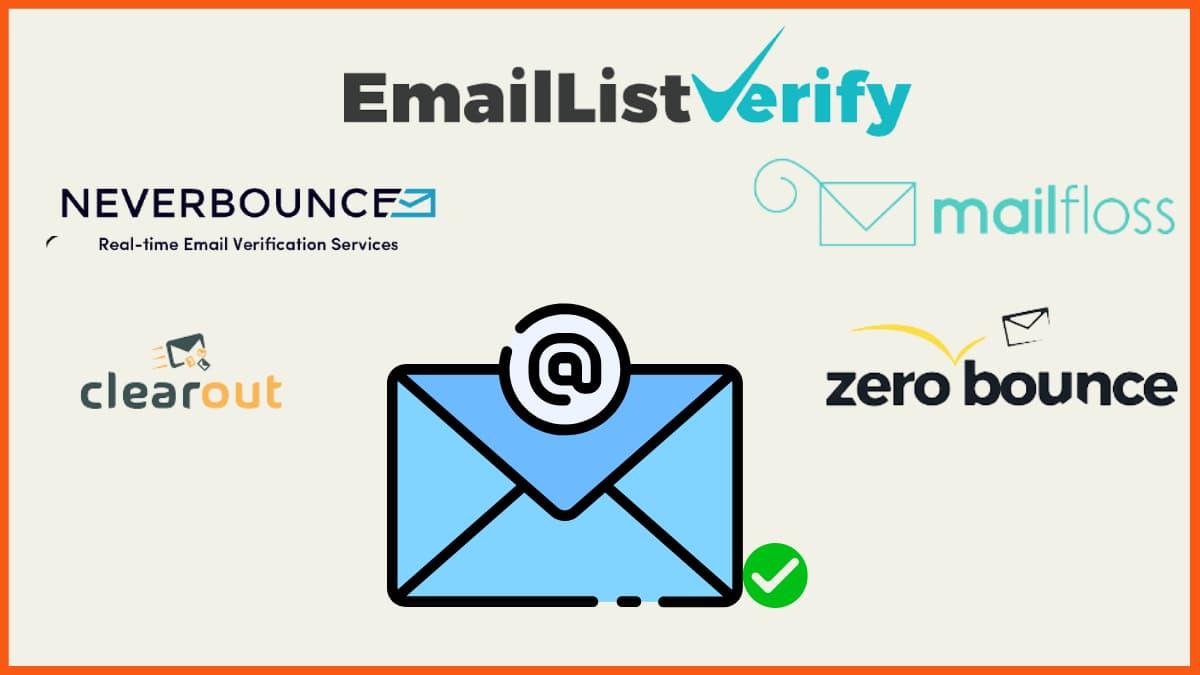
Using Email Verification Tools to Avoid Bounces
Email verification tools are essential for anyone looking to maintain a healthy mailing list. These tools help ensure that the addresses you are sending to are valid, reducing the risk of bounces and enhancing your email marketing strategy. By integrating email verification into your workflow, you set the stage for better engagement and higher deliverability rates.
One of the primary benefits of using these tools is the ability to cleanse your email list. Over time, email addresses can become obsolete for various reasons. People change jobs, switch email providers, or simply stop using certain accounts. Email verification tools can identify invalid or inactive addresses, allowing you to focus your efforts on engaged users. This proactive approach not only improves your bounce rates but also boosts your sender reputation.
Another advantage is the real-time verification feature offered by many tools. This allows you to check the validity of an email address at the moment of collection—be it through a sign-up form or a landing page. By preventing invalid addresses from entering your list in the first place, you can save time and resources while enhancing your overall email marketing strategy.
| Email Verification Tool | Key Feature | Benefits |
|---|---|---|
| ZeroBounce | Real-time verification | Prevents invalid emails from joining your list |
| NeverBounce | List cleaning | Reduces bounces and improves deliverability |
| Hunter.io | Email finder | Helps locate valid emails for outreach |
Moreover, these verification tools often provide detailed reports that can help you understand your audience better. By analyzing the verified emails, you can segment your list more effectively and tailor your campaigns to match the interests of your audience. This level of granularity leads to more personalized content, ultimately increasing your open and click-through rates.
It’s also worth mentioning that maintaining a clean email list is crucial for compliance with regulations such as the General Data Protection Regulation (GDPR). Using email verification tools not only aids in keeping your list updated but also ensures that you’re adhering to legal requirements. This minimizes the risk of penalties while enhancing your brand’s credibility.
the peace of mind that comes with knowing your emails are reaching real inboxes is invaluable. By investing in email verification tools, you not only reduce bounces but also improve your sender score, making it easier for your messages to land in the primary inbox instead of the dreaded spam folder. In the competitive landscape of email marketing, this can be a game-changer.
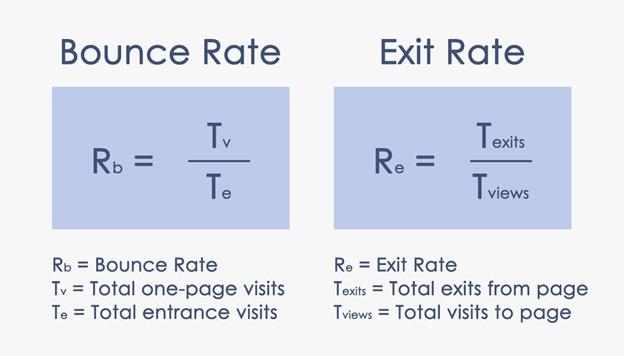
How to Monitor and Analyze Bounce Rates Effectively
Monitoring and analyzing bounce rates is crucial for ensuring that your email campaigns are effective. A high bounce rate can indicate underlying issues with your email list or content quality, which can hinder your marketing efforts. To tackle this effectively, consider the following strategies:
- Utilize Email Analytics Tools: Leverage tools like Mailchimp, Constant Contact, or SendGrid that provide comprehensive analytics on your email performance, including bounce rates.
- Segment Your Email List: By categorizing your audience based on engagement, behavior, or demographics, you can tailor your campaigns. This helps reduce bounces from uninterested recipients.
- Monitor Hard and Soft Bounces: Understand the difference between hard bounces (permanent delivery failures) and soft bounces (temporary issues). Focus on removing addresses that generate hard bounces while investigating the causes of soft bounces.
- Analyze Email Deliverability: Ensure that your emails are not landing in spam folders. Regularly check your sender reputation and use authentication methods like SPF and DKIM to enhance deliverability.
Implementing a strategy to manage your bounce rates requires a proactive approach. Start by regularly cleaning your email list; remove inactive subscribers and invalid email addresses. This can significantly improve your bounce rates over time. Additionally, consider running periodic re-engagement campaigns to win back those who haven’t interacted with your emails lately.
It’s also helpful to conduct A/B testing on your email subject lines and content. This can reveal which versions resonate most with your audience, thereby improving engagement and reducing the chances of bounces. If you notice that certain emails consistently have higher bounce rates, analyze their components closely.
| Email Component | Potential Impact on Bounce Rate |
|---|---|
| Subject Line | Poorly written subject lines may lead to less engagement. |
| Email Content | Irrelevant or low-quality content can lead to unsubscribes. |
| Send Frequency | Too many emails can annoy subscribers and increase bounces. |
keep an eye on the timing of your emails. Sending your campaigns at optimal times can enhance open rates and engagement, further reducing the likelihood of bounces. Use historical data to determine when your audience is most active and align your sending schedule accordingly.
By taking these steps to monitor and analyze your bounce rates effectively, you can create a more engaged audience and ensure that your email marketing efforts yield the desired results.

Taking Action When You Encounter a Bounced Email
Encountering a bounced email can be frustrating, but the right steps can help you quickly resolve the issue and improve your email delivery rates. First and foremost, don’t panic! A bounced email is not the end of your communication; rather, it’s a signal to take action. Here’s how to effectively deal with it.
Identify the Type of Bounce: Knowing whether the email bounced due to a soft bounce or a hard bounce is crucial. Soft bounces are temporary issues, like a full inbox or a server problem, while hard bounces indicate permanent issues, like an invalid email address. Once you identify the type, you can decide your next move:
- For soft bounces, you might want to try resending the email after a short period.
- For hard bounces, it’s best to remove the email address from your list to maintain your sender reputation.
Verify Email Addresses: If you notice multiple hard bounces from a specific domain, it’s worth checking if the email addresses are valid. Consider using email verification tools, which can significantly reduce your bounce rates by ensuring that addresses in your list are active and correct. This proactive approach saves you time and keeps your list clean.
Reach Out Directly: If you have a good relationship with the recipient, consider reaching out through another communication method. A quick call or message can confirm if the email address is still valid or if there’s a better way to connect. This not only clears up confusion but also reinforces your relationship.
Keep Your List Updated: Regularly cleaning your email list is essential. Set a schedule to review and remove inactive or invalid email addresses. You can also encourage recipients to update their information if they change email addresses. A clean list increases engagement rates and helps you stay clear of the spam folder.
Monitor Email Engagement: Take a closer look at your email engagement metrics. Low open rates may indicate that your emails aren’t reaching your audience. By paying attention to these metrics, you can adjust your strategy, such as segmenting your audience or improving your email content, to better connect with your recipients.
| Action | Recommendation |
|---|---|
| Soft Bounce | Attempt resending after a few days |
| Hard Bounce | Remove from mailing list |
| Multiple Bounces | Verify with an email validation tool |
| Inactive Users | Encourage updates and engagement |
Implement Double Opt-In: To prevent future bounces, consider using a double opt-in method for subscriptions. This ensures that subscribers confirm their email addresses, reducing the chances of invalid addresses joining your list. It’s a small step that can lead to significant improvements in your email delivery rates.
By taking these actions when faced with a bounced email, you can not only resolve the immediate issue but also strengthen your email strategy for the future. Remember, each bounce is an opportunity to learn and enhance your email marketing efforts!

Creating a Proactive Email Strategy to Reduce Bounces
To effectively reduce email bounces, a proactive email strategy is essential. This approach not only helps in maintaining a good sender reputation but also enhances engagement with your audience. Here are some key elements to consider when crafting your strategy:
- Regularly Clean Your Email List: One of the most effective ways to minimize bounces is by routinely cleaning your email list. Remove inactive users, invalid email addresses, and those who consistently hit the “unsubscribe” button. This practice ensures that you’re only engaging with those genuinely interested in your content.
- Use Double Opt-In: Implementing a double opt-in process allows you to confirm that your subscribers want to receive emails from you. By sending a confirmation email after the initial signup, you can significantly reduce the chances of including invalid addresses in your list.
- Segment Your Audience: Tailoring your email campaigns to specific segments of your audience will not only increase engagement but also decrease bounce rates. By sending relevant content to the right people, you ensure that your messages resonate and encourage interaction.
- Monitor Engagement Metrics: Keep a close eye on your email engagement metrics. High open rates, click-through rates, and low bounce rates are indicators of a healthy email strategy. Utilize A/B testing to identify what works best for your audience and adjust your approach accordingly.
In addition to these strategies, it’s crucial to understand the technical aspects of email delivery. Here’s a quick reference table outlining some factors that can affect your bounce rates:
| Email Factor | Impact on Bounce Rates |
|---|---|
| Sender Reputation | High impact; affects deliverability. |
| Domain Authentication | Ensures legitimacy; lowers bounce risk. |
| Email Content | Irrelevant or spammy content can lead to bounces. |
| Subscription Source | Quality sources yield better engagement. |
Another crucial element is maintaining a consistent sending schedule. Regular communication keeps your brand top-of-mind for subscribers, reducing the chances of them forgetting about you or marking your emails as spam. Aim for a frequency that works for your audience, whether that’s weekly, bi-weekly, or monthly.
Lastly, always keep an eye on feedback. Encourage your subscribers to provide input on the content they wish to receive. This feedback loop not only helps in refining your email strategy but also strengthens the relationship with your audience, making them less likely to disengage.
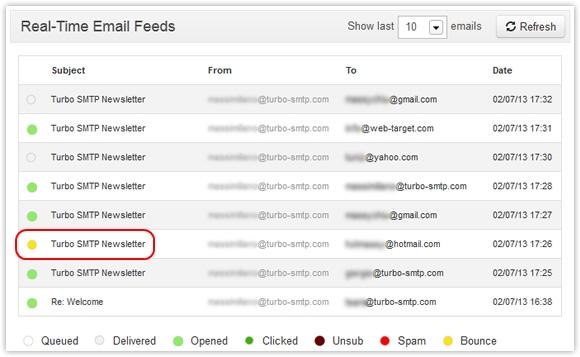
The Long-Term Benefits of Reducing Email Bounces for Your Business
Reducing email bounces is more than just a technical necessity; it’s a strategic advantage that pays dividends over time. When your emails consistently land in inboxes rather than bouncing back, you build a stronger communication channel with your audience. This not only enhances your brand’s credibility but also cultivates a loyal customer base.
Improved Sender Reputation: Every time an email bounces, it can negatively impact your sender reputation. ISPs monitor your sending behavior, and a high bounce rate can lead to your emails being flagged as spam. By minimizing bounces, you protect your sender reputation and ensure that your messages reach their intended recipients.
Increased Engagement: A clean email list leads to better engagement rates. When your emails are delivered successfully, your open and click-through rates improve. Engaging content meets an engaged audience, creating a positive feedback loop that can increase your conversion rates over time.
Cost Efficiency: Email marketing can be a cost-effective way to reach your audience, but sending emails that bounce is like throwing money down the drain. Each email sent that bounces represents wasted resources. By focusing on reducing bounces, you maximize your return on investment (ROI) and allocate budget more effectively.
Better Analytics and Insights: When you send emails that actually reach inboxes, your analytics become more reliable. Accurate data allows you to understand your audience better, enabling you to tailor content and offers that resonate with your subscribers. This leads to more effective marketing strategies in the long run.
Customer Trust and Loyalty: Consistent, reliable communication fosters trust. When customers receive your emails regularly and without issues, they associate your brand with professionalism and reliability. This trust can translate into loyalty, encouraging repeat business and word-of-mouth referrals.
Competitive Edge: In a crowded marketplace, standing out is crucial. Businesses that maintain clean email lists and achieve low bounce rates can leverage this as a competitive advantage. A reputable sender status enhances your brand’s visibility and increases the chances of being considered over competitors with less reliable email practices.
Quick Tips for Reducing Email Bounces
- Regularly clean your email list to remove inactive or invalid addresses.
- Use double opt-in methods to ensure subscribers genuinely want to receive your emails.
- Monitor bounce reports and take immediate action on hard bounces.
- Implement authentication protocols like SPF, DKIM, and DMARC.
Summary of Long-Term Benefits
| Benefit | Description |
|---|---|
| Improved Sender Reputation | Protects your brand from being marked as spam. |
| Increased Engagement | Leads to higher open and click rates. |
| Cost Efficiency | Maximizes your ROI on email marketing. |
| Better Analytics | Provides accurate data for insightful marketing. |
| Customer Trust | Fosters loyalty and repeat business. |
| Competitive Edge | Enhances visibility in the market. |
Frequently Asked Questions (FAQ)
Q&A: What Is a Bounced Email? 5 Reasons (& How to Avoid Them)
Q1: What exactly is a bounced email?
A1: Great question! A bounced email is essentially a message that couldn’t be delivered to the recipient’s inbox. Instead of arriving as intended, it gets “bounced” back to the sender with an error message explaining why it didn’t go through. This can be pretty frustrating, especially if you’re trying to reach important contacts.
Q2: Why do emails bounce in the first place?
A2: There are several reasons why emails may bounce. Here are five common culprits:
- Invalid Email Address: If the recipient’s email address is misspelled or no longer exists, the email will bounce.
- Full Mailbox: Sometimes, the recipient’s inbox is just too cluttered. If it’s full, your email won’t make it through.
- Blocked by Spam Filters: If your email looks suspicious or contains certain keywords, it might be blocked by spam filters, leading to a bounce.
- Server Issues: Temporary issues on the recipient’s email server can also cause a bounce. These are usually resolved quickly, but it can be inconvenient!
- Technical Errors: Sometimes, there are technical glitches either on your end or the recipient’s that can cause emails to fail delivery.
Q3: How can I avoid bounced emails?
A3: Avoiding bounced emails is totally doable with some proactive measures! Here are a few tips:
- Double-Check Email Addresses: Always verify that the email address is correct before hitting send. It can save you a lot of hassle!
- Encourage Regular Inbox Maintenance: If you’re in touch with someone frequently, gently remind them to clean out their inbox to ensure they don’t miss your messages.
- Use a Reliable Email Service: Opt for email providers known for good deliverability rates. They often have features that help you avoid getting flagged as spam.
- Monitor Your Sending Practices: Avoid sending too many emails at once or using too many promotional keywords that might trigger spam filters.
- Stay Updated on Tech Issues: If you’re dealing with a known issue on your email server, be proactive about resolving it before sending out important communications.
Q4: What should I do if my email bounces?
A4: First of all, don’t panic! Check the bounce-back message for clues on why it failed. If it’s an invalid address, you might want to reach out through other channels to confirm the correct email. For temporary issues, simply wait a bit and try sending it again later. And remember, learning from these bumps can help you refine your email practices for the future!
Q5: Why is it so important to minimize bounced emails?
A5: Minimizing bounced emails is crucial because a high bounce rate can impact your sender reputation and deliverability. If email providers see that a lot of your messages are bouncing, they might label your future emails as spam. This can seriously hurt your communication efforts, especially if you rely on email for business or important updates. So, taking steps to avoid bounces isn’t just a good practice—it’s essential for effective communication!
Feel free to use this Q&A to empower your readers with the knowledge they need to understand and tackle bounced emails!
In Summary
understanding what a bounced email is and the reasons behind it is crucial for anyone looking to maintain effective communication, whether it’s for personal use or business. By recognizing the common pitfalls that lead to bounced messages—like invalid addresses, full inboxes, and server issues—you can take proactive steps to ensure your emails land where they’re intended.
Remember, a little diligence goes a long way! Regularly cleaning your email list, verifying addresses before hitting send, and crafting engaging content can significantly reduce bounce rates. So don’t let your important messages go astray; take control of your email game today.
Stay connected, keep those inboxes clean, and watch your communication flourish. Got any questions or tips of your own? Share your thoughts in the comments below! Happy emailing!




